Twists and Turns of the Education Tax Credits
If you have a child or children in college, or perhaps you or your spouse is a student, it can be confusing to figure out which of two potential education tax credits (1) you are eligible for and (2) gives you the greater tax benefit. This article looks at some of the twists and turns of these credits.
There are two higher-education tax credits: the American Opportunity Tax Credit (AOTC) provides up to $2,500 worth of credit for each student, 40% of which may be refundable. The credit is equal to 100% of the first $2,000 of college tuition and qualified expenses and 25% of the next $2,000. The AOTC only applies to the first 4 years of post-secondary education.
The other credit is the Lifetime Learning Credit (LLC), which only provides a maximum $2,000 of credit (20% of up to $10,000 of eligible expenses) per family per year. None of it is refundable, meaning it can only be used to offset your tax liability, and any additional credit amount is lost.
Here are some of the issues that arise with these two credits:
1. Many students attend local colleges for the first two years and then transfer to a university for the remainder of their education. Knowing the university tuition will be higher, some parents take the LLC and wait on the AOTC, thinking they can use it in years with higher tuition and get a larger credit. This isn’t a good plan because the AOTC credit is only good for the first four years of post-secondary education. Thus, it is always better to claim the AOTC in the first four years.
2. A special rule allows the tuition for an academic period that begins in the first three months of the next year to be paid in advance and thus increase the amount of tuition qualifying for the credit in the year the tuition is paid. This allows for planning when to make tuition payments to maximize credits, especially in the first partial calendar year.
Example: Jill graduated from high school in June and will start college in September. Her tuition and credit-qualifying expenses for the semester covering the last four months of the year and January of the next year are $1,500. Her mother, Cindy, is aware of the 3-month rule, and in December she prepays Jill’s $1,700 tuition for the semester beginning February 1 of the next year, bringing the qualifying expenses to a total of $3,200. The AOTC is equal to 100% of the first $2,000 of qualifying expenses and 25% of the next $2,000. Thus the AOTC for Jill is $2,300 ($2,000 + 25% of $1,200). Cindy could increase the credit for the year to the full $2,500 maximum by purchasing $800 worth of course materials needed for “meaningful attendance or enrollment” in Jill’s course of study.
3. Qualifying expenses other than tuition are often overlooked. Taxpayers can take advantage of a tax regulation that specifies for the AOTC that qualifying expenses include course materials needed for “meaningful attendance or enrollment” whether purchased from the school or an outside vendor. However, for the Lifetime Learning Credit only course material purchased from the school qualifies.
4. Taxpayers also often overlook another very important fact: Whoever claims the student as a dependent gets to claim the education credit even if someone else paid for the tuition and qualified expenses.
Example: Suppose Jill’s Uncle Lee pays her tuition but Cindy, her mother, claims Jill on her tax return. Cindy is the one who qualifies for and receives the credit.
5. What many also overlook is the fact that the AOTC and LLC are phased out for higher-income taxpayers based on their adjusted gross income (AGI). The phaseout kicks in for AGIs between $160,000 and $180,000 for married taxpayers filing jointly, and between $80,000 and $90,000 for others. As an exception, married taxpayers filing separately aren’t eligible to claim either credit. In past years the phaseout ranges were different for the AOTC and LLC, but in a simplification move, Congress made them the same starting with 2021 returns.
So, if the parent claiming the student has an AGI above the phaseout range, regardless of who paid the tuition and qualified expenses, no one will be able to claim the credit. Thus, it is important to consider the income of the individual who is claiming the student as a tax dependent when there is an option of who claims the child, such as in cases of some divorced parents.
6. Because of gift tax issues, a person other than the one qualifying for the credit, such as a grandparent, may hesitate to volunteer to pay a tuition expense. Where payments are made directly to the educational institution, they are excluded from gift tax rules. However, depending on the amounts involved, there may be a gift tax reporting requirement if a monetary gift is given to the student or the individual who is claiming the credit and then the gift money is used to pay tuition.
7. A question that often comes up is whether tuition payments to a trade school or foreign university will count toward the education credit. To qualify for the credit, the tuition must be paid to any accredited public, nonprofit or proprietary post-secondary institution eligible to participate in the student aid programs administered by the Department of Education. This would rule out foreign educational institutions because they don’t qualify for the student aid program administered by the Department of Education, but it would generally include most accredited public nonprofit or privately owned, profit-making post-secondary educational institutions in the U.S.
As you can see, there are several aspects of the education credits that must be considered. If you need assistance with education planning or have questions about the education tax credits as they apply to your particular circumstances, please call our office.


